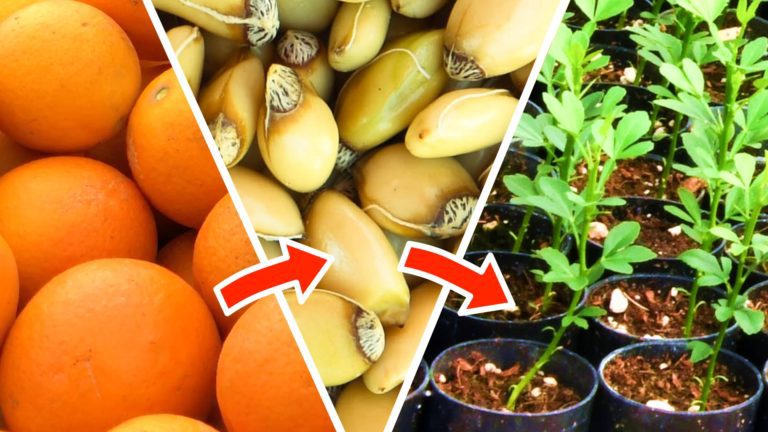Shoot Tip Grafting in Citrus to Remove Diseases
California scientists use various techniques, including shoot tip grafting to avoid all graft-transmissible diseases when introducing a citrus variety to the state. Because citrus trees are vulnerable to many graft-transmissible diseases, all citrus varieties to be introduced in California must by law go through the Citrus Clonal Protection Program or CCPP at the University of California Riverside. Using a grafting technique called shoot tip grafting, the CCPP will remove any disease-causing organisms and certify that a variety is healthy for release in California.

Grafting Citrus Trees Under a Microscope — YouTube Video
Introducing New Citrus Varieties to California
Any citrus variety can be introduced to the state of California through the CCPP. I have requested some citrus variety introductions and it is possible for any Californian to order a citrus variety that is not available in California.

Sending Cuttings of a New Citrus Variety to the CCPP
Cuttings of new varieties submitted to the CCPP must be washed in soapy water after removing the leaves. This is an important step to remove insects that could be on the cuttings.
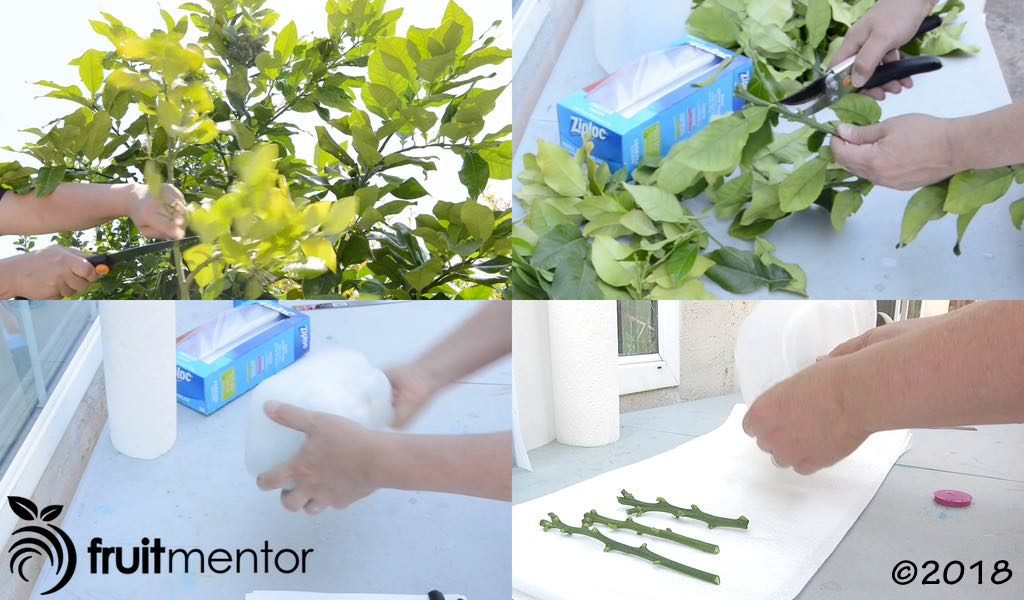
After rinsing and air drying, the cuttings are sealed inside of a plastic bag and shipped using an express courier service. Do not ship budwood to the CCPP without approval and appropriate permits as it would be illegal. To introduce a citrus variety, click here to learn how to proceed properly.

Preparing to Shoot Tip Graft the New Citrus Variety
When the cuttings arrive at the CCPP lab, the lab technician first photographs them to document their condition.

The cuttings are then surface sterilized in a solution of chlorine bleach. Next the cuttings are cut into shorter pieces and inserted into test tubes containing a plant growth medium.

The tubes are then placed inside an incubator. Within a few days, buds on the cuttings start to grow. Once there is sufficient growth, the cuttings are removed from the incubator to be grafted.

Rootstock seeds are planted in test tubes with a plant growth medium and are grown inside of a dark incubator. The below photos show rootstock seedlings that are the right size to be grafted.

Performing the Citrus Shoot Tip Grafting
Under the microscope it is hard to understand sizes without a reference, so this demonstration uses a United States penny to give a sense of scale.

First the rootstock seedling is removed from the test tube and placed on a petri dish. The top of the seedling is cut off. Next, new growth of a shoot from the variety being introduced is placed on the petri dish.

This shoot may contain bacteria, viruses, and other organisms that can cause diseases, but scientists have discovered that the very tip of the shoot is free of disease-causing organisms. These organisms have difficulty invading the very tip of the shoot called the apical meristem. By cutting off this healthy part of the shoot tip, it is possible to grow a tree free of disease-causing organisms.

The tiny leaves are removed with a scalpel and the apical meristem is cut off very carefully.
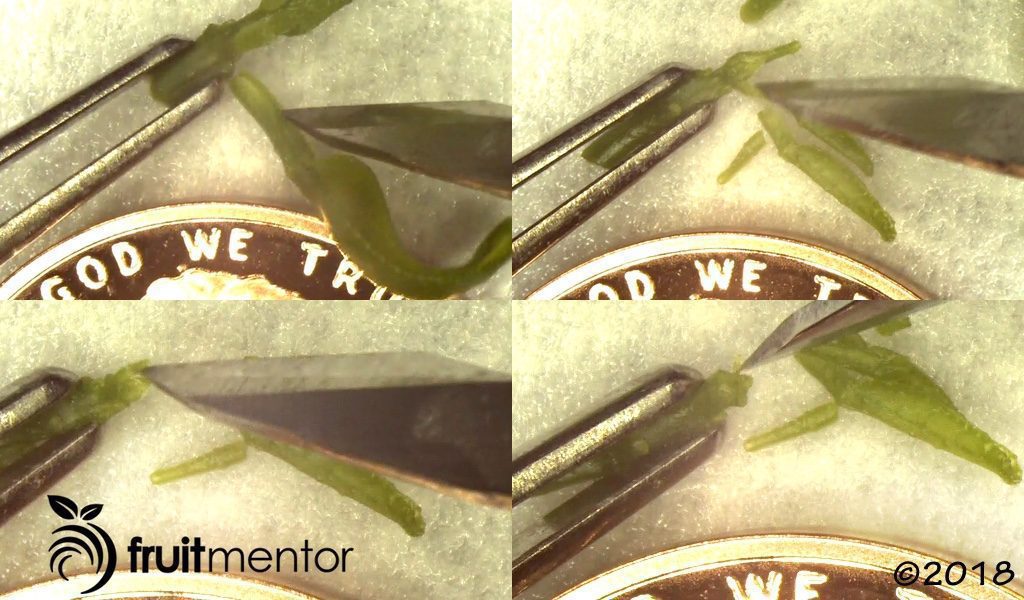
Precision is critical. If too little of the shoot tip is removed, the graft will fail. If too much of the shoot tip is removed, it could contain diseased tissues.

A triangular incision is cut into the rootstock seedling and the shoot tip is carefully moved onto the incision. Even a slight misstep could crush the delicate shoot tip and cause the graft to fail.

The grafted plant is then inserted back into a test tube and placed into the growth chamber.

The survival rate of citrus shoot tip grafting is low, about 10%, so many grafts must be performed to achieve a single successful shoot tip graft.
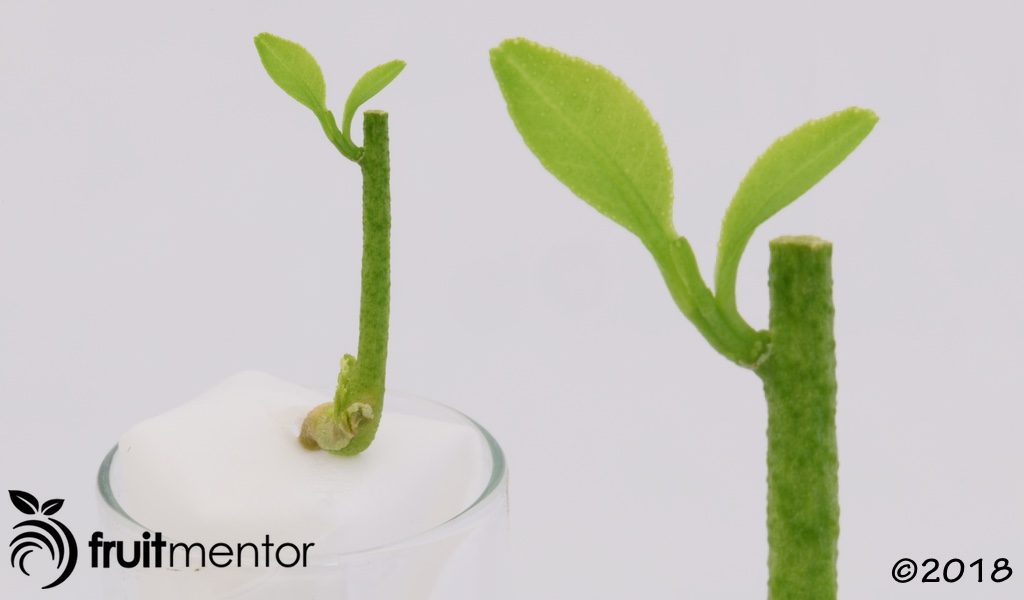
For my above YouTube video, I made a number of unsuccessful attempts to capture a shoot tip graft growing in a time-lapse video before succeeding. When a shoot tip graft succeeds, it starts growing at a random time, making it more difficult to capture in time-lapse video. For the successful time-lapse video, a citrus variety that had been observed to have a higher-than-normal shoot tip grafting survival rate was chosen. The below photo shows two of five of these shoot tip grafts growing.
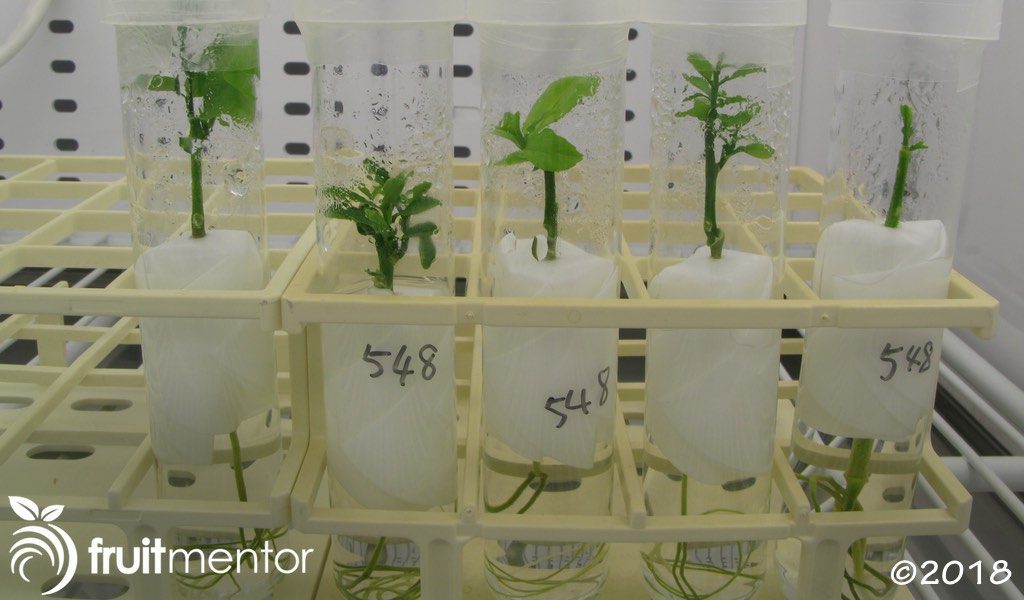
Performing a Second Graft for Faster Growth
Once the graft of the introduced variety has grown to a good size, it is propagated onto a bigger rootstock seedling. In order to produce fast growth, the rootstock typically used is rough lemon. First the lemon seedling is bent over to overcome apical dominance, which would prevent further growth of the graft. Next a T-shaped incision is cut into the lemon seedling.

Then the tiny tree of the introduced variety is removed from the test tube and any rootstock suckers are removed. A cut is made on the rootstock part of the tiny tree.

The rootstock part of the tiny tree is then inserted into the incision on the lemon seedling to make a double graft. The graft is wrapped very carefully with grafting tape to avoid breaking the soft tiny tree.

An easy-to-read label and a securely-fastened label are both added to the container. The double grafted tree is then placed in a growth chamber until the new graft has healed.
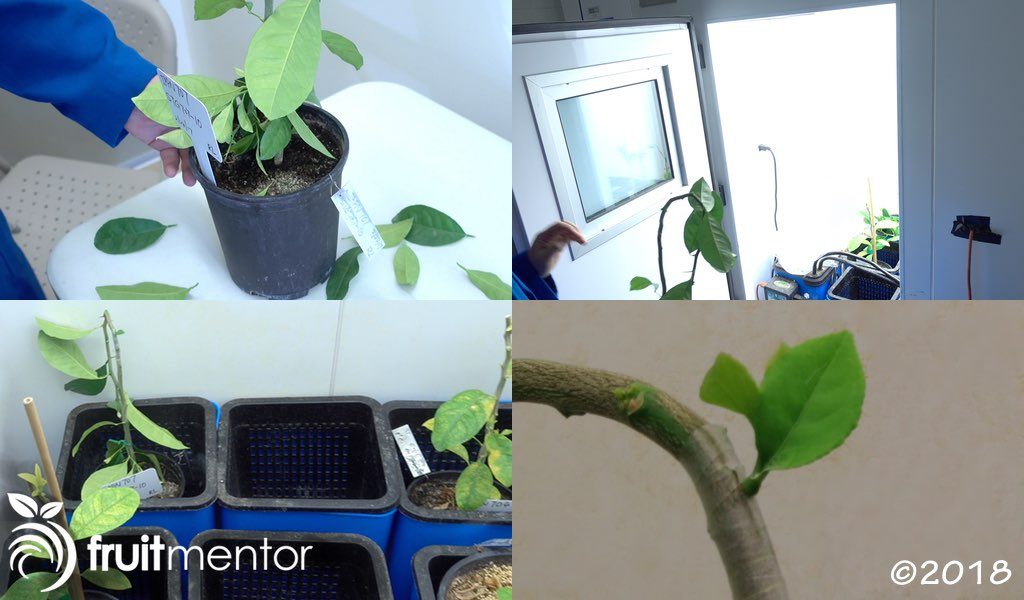
Testing for Citrus Graft-Transmissible Disease-Causing Organisms
When the tree has put on sufficient growth, tissue samples are taken and tested for all known citrus graft-transmissible bacteria, viruses, and other organisms that cause diseases. Although it has been shoot tip grafted, there is a chance that the shoot tip could contain infected tissue, so it is critical to test the tree.

Molecular Diagnostic Tests
High-tech molecular diagnostic tests determine whether plant tissue samples contain disease-causing organisms by looking for their DNA fragments.

If DNA fragments of these disease-causing organisms are detected, the tree fails the test.
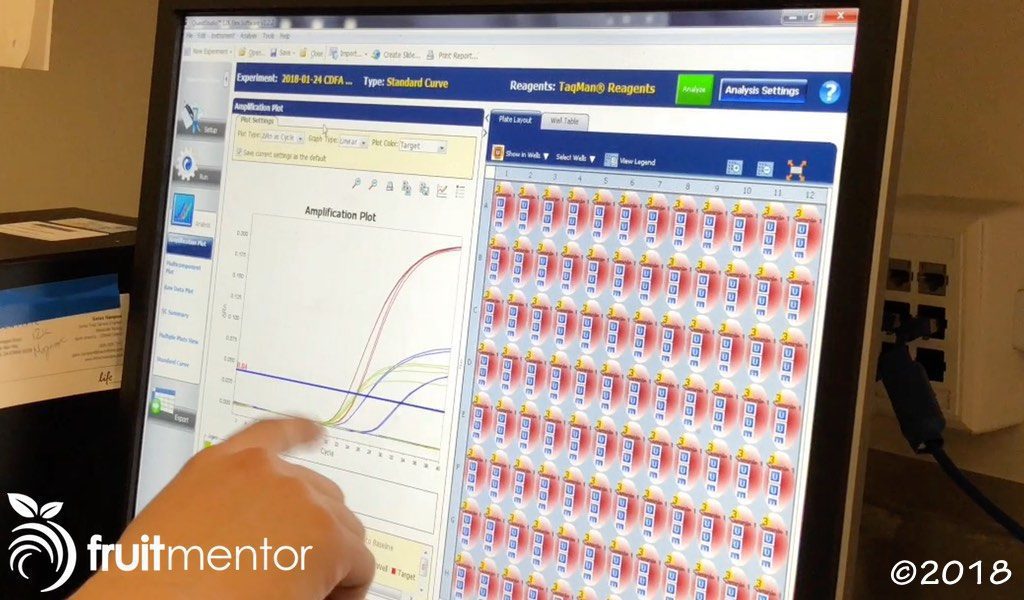
Testing with Indicator Plants
Other tests are performed where tissue samples of the new tree are grafted onto special indicator plants that will show specific disease symptoms when disease is present.

If certain disease symptoms are seen, the tree fails the test.
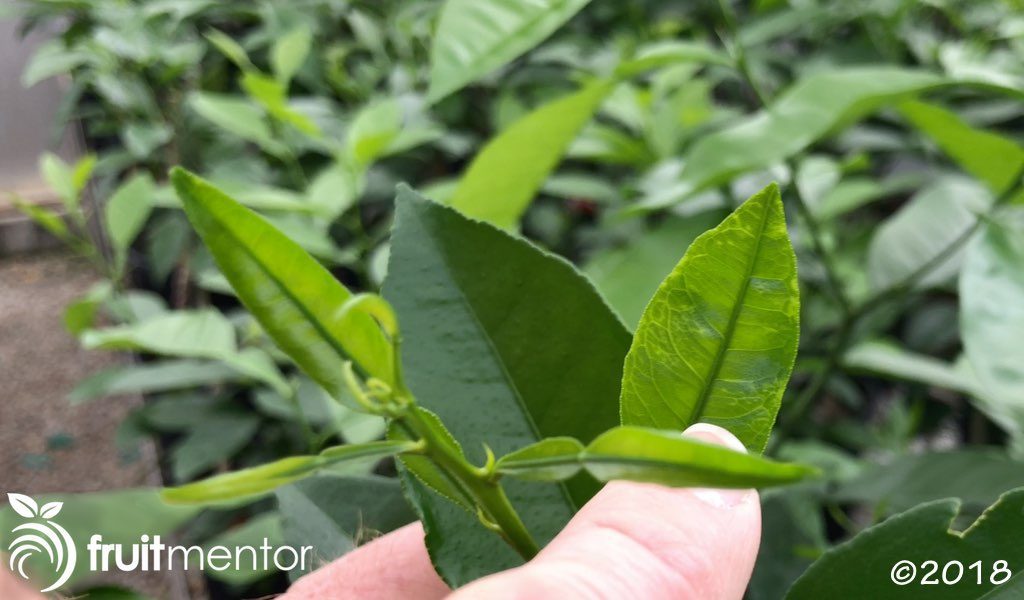
If the tree fails any test, the shoot tip grafting is repeated. If the tree passes all tests, the tree will be released from quarantine and budwood of the recently introduced variety will be made available to everyone.
The CCPP has long worked to help all Californians access the citrus varieties that they would like to grow by maintaining and introducing new varieties based on industry and consumer interest. Although the CCPP maintains hundreds of different citrus varieties, there are still varieties that Californians would like to grow that are currently unavailable from the CCPP. There is no reason to smuggle budwood into California because anyone can request a citrus variety introduction by contacting the CCPP. This action helps to prevent the introduction and spread of deadly citrus diseases in California that could threaten not only our citrus industry, but also the trees in our back yards.
If you are interested in learning more about new variety introduction, please click here to learn more.
Support the CCPP Mission
You can support the CCPP mission by clicking here to make a tax deductible contribution to the CCPP.
Acknowledgement
For their help with this article and the YouTube video, I thank Georgios Vidalakis, Greg Greer, Ning Chen, Sorhab Bodaghi, Silvia Abdulnour, Brandon Ramirez, and Rock Christiano.
Resources for Californians
Please visit CaliforniaCitrusThreat.org for more information on how to stop the spread of deadly citrus disease in California.
Funding
This article was funded by a grant from California’s Citrus Research Board.





